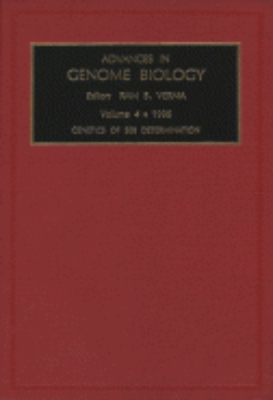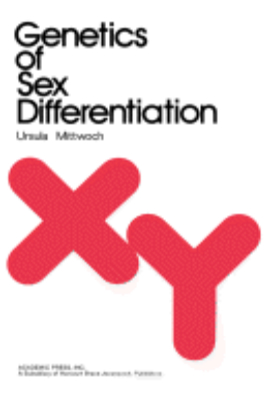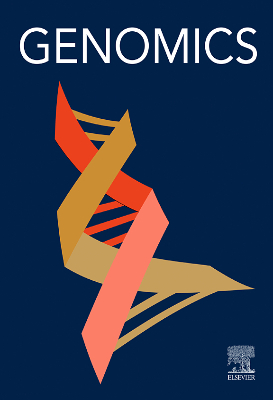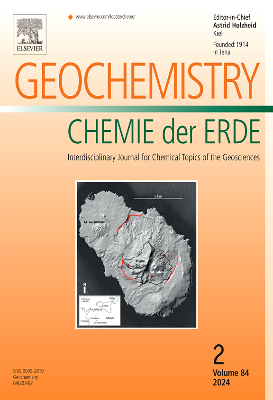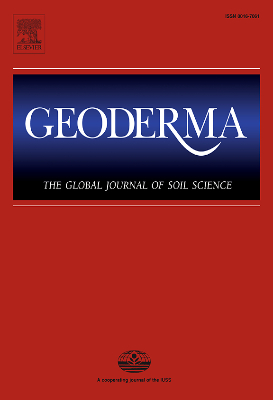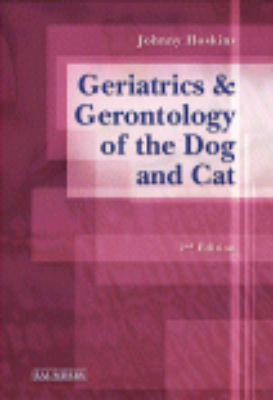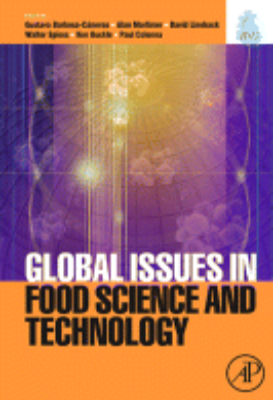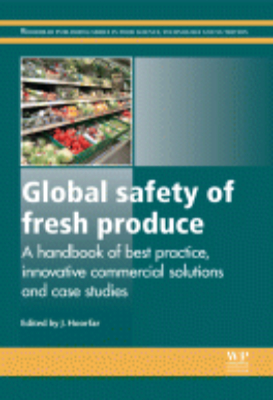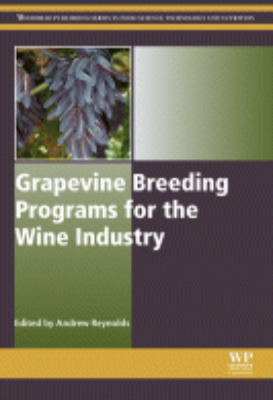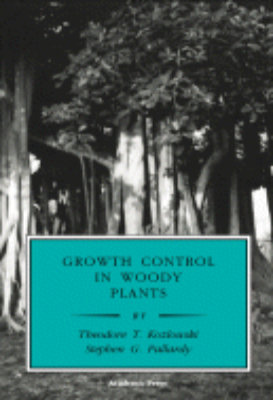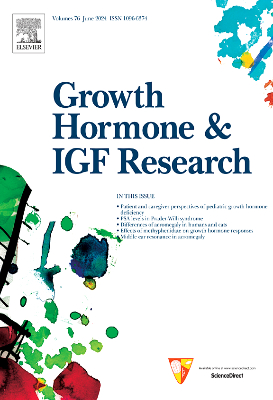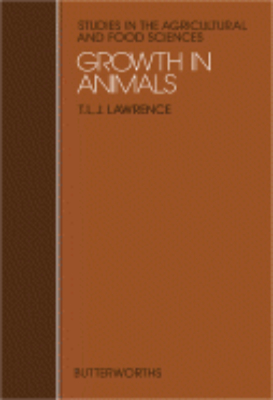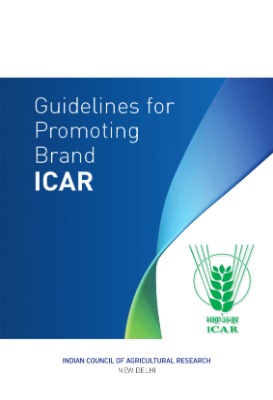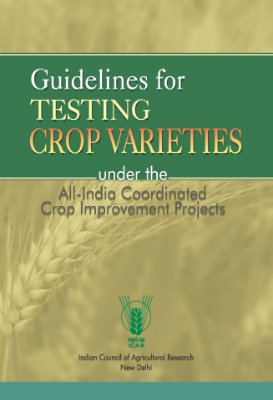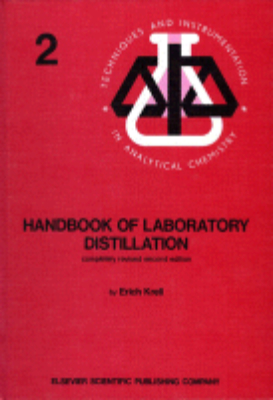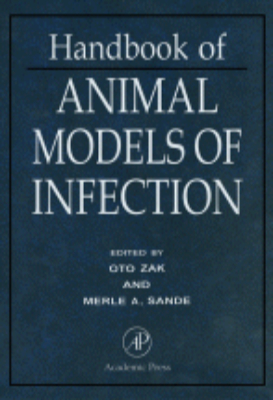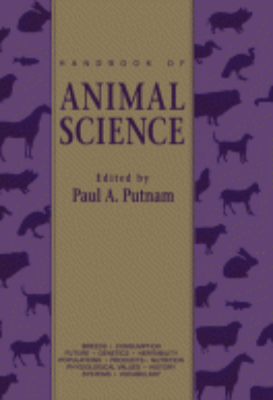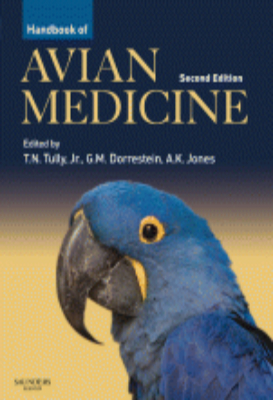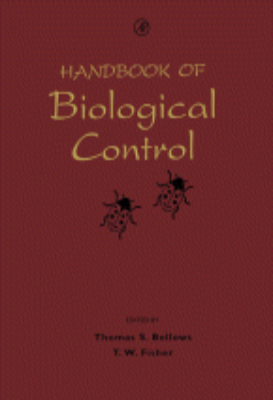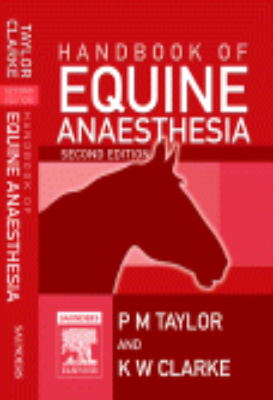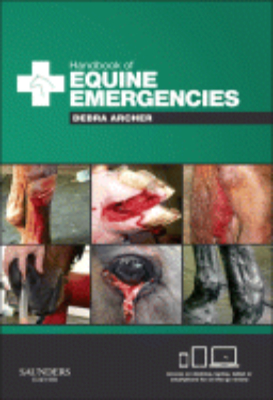E-Resources
Genetics of Reproduction in Sheep
Genetics of Reproduction in Sheep is a compilation of papers that are concerned with the study and application of genetics to the reproduction in sheep. The book is divided into six parts, grouping the papers according to topic. The main topics include genetic variation and selection; the inheritance and the effects of the Booroola gene; genetic strategies for single genes; physiology of genetic variation; the physiological criteria of genetic merit; and the national requirement and systems of husbandry. The text is recommended for those involved with raising sheep and plan to apply genetics in their reproduction, as well as for geneticists who wish to conduct studies on how their field is applied to sheep reproduction.
Genetics of Sex Differentiation
Genetics of Sex Differentiation intends to help readers understand the genetic basis of sex differentiation. The book focuses on explaining how the sex chromosomes affect the process of sex differentiation by influencing the rates at which cells divide. The book is composed of seven chapters. It provides overviews of classical genetics and structure of cells. It also explains the chromosomal basis of sex determination and sex determination using Drosophila. Polygenetics and continuous and quasicontinuous variations are also discussed. The book also discusses sex factors, determination, and disorders. Moreover, it explains the heterochromatin, embryological basis of sex differentiation, and triploidy and autosomal effects. In addition, it discusses the relationship of genes, chromosomes, growth, and sex. The book is an excellent ""bedside book"" for students in biology, specifically in genetics and developmental biology. Lecturers and professionals in biology and genetics will also find this book invaluable for their practice.
Genetics of the Norway Rat
Genetics of the Norway Rat details the various genetic traits of Norway rat. The book covers a wide spectrum of trait inheritance, from color variation up to the various genetic mutation and quirks. The coverage of the text includes growth, metabolism, reproduction, and endocrinology. Several chapters also cover the physiological traits that include skeleton, viscera, sensory organs, and nervous. The text also takes into consideration the immunogenetics, pharmacogenetics, psychogenetics, and cytogenetics of the species studied. The book will be of great interest to mammalian geneticists. Researchers who are using rats as a test subject in their research will also benefit from the text.
Genetics Structure and Function of Blood Cells
Genetics, Structure and Function of Blood Cells contains the proceedings of the symposia of the 28th International Congress of Physiology held in Budapest between 13 and 19 of July, 1980. Organized into six parts, this book begins with a discussion on the genetic regulation of hemoglobin synthesis. Parts II and III describe the immunoglobulin receptors and their effectors, and antenatal development of human blood cells. Subsequent parts talk about regulation of differentiation of hemoglobin structure and function and the role of calcium in red cell membrane transport processes. The last part elucidates the structure and function of blood cell membranes.
Geriatrics & Gerontology of the Dog and Cat
This groundbreaking reference is the first and only comprehensive book to address the needs of older dogs and cats, providing the veterinary clinician, veterinary student, and animal health technician with health-related information that is clinically relevant and quickly retrievable in a simple format. It offers a complete and practical review of the causes, incidence, clinical features, diagnosis, and management of both common and uncommon problems associated with the aging process and acquired illness. Each chapter offers tips on the physical examination of that body system and provides quick-reference tables for guidance on diagnosis and treatment. Because of the increased health problems in aging dogs and cats and the ardent attachment of the pet owner, veterinarians need to know more about aging so they may delay or minimize the progressive deterioration of aging and improve the quality of life for geriatric dogs and cats.
Global Issues in Food Science and Technology
A selected compilation of writings by IUFoST organization supporters, Global Themes in Food Science and Technology were those identified as representing the most important and relevant subjects facing food scientists and technologists today. Chosen by an international editorial board, these subjects offer insights into current research and developments and were selected to stimulate additional interest and work in these key areas. The International Union of Food Science and Technology (IUFoST) is a country-membership organization is the sole global food science and technology organization. It is a voluntary, non-profit association of national food science organizations linking the world's best food scientists and technologists. The goals of their work include the international exchange of scientific and technical information, support of international food science and technology progress, the stimulation of appropriate education and training in these areas, and the fostering of professionalism and professional organization within the food science and technology community.
Global Safety Of Fresh Produce
"Continuing food poisoning outbreaks around the globe have put fresh produce safety at the forefront of food research. Global Safety of Fresh Produce provides a detailed and comprehensive overview of best practice for produce safety throughout the food chain, and unique coverage of commercial technologies for fresh produce safety. Part one covers the production and regulation of fresh produce on the agricultural level, including issues of niche farm fresh products, FDA regulation, and zoonotic transfer of pathogens from animals to farm products. Part two moves on to look at safety and environmental issues surrounding fresh produce processing, such as postharvest washing, alternative sanitizers, and using produce waste as animal feed. Part three focuses on current and emerging commercial solutions for fresh produce safety, like ionizing radiation and edible coatings, and part four covers methods of laboratory testing and related legislation. The final section of the book covers a series of case studies of fresh produce safety breaches, including European E. coli outbreaks in sprouts and leafy greens, and the illegal use of fluorescent whitening agents (FWAs) in China. This book is an essential text for R&D managers in the fresh produce industry, quality control professionals working with fresh produce throughout the food chain, postgraduate students, and academic researchers with an interest in fresh produce safety. Key Features. Provides a comprehensive overview of best practice for produce safety. Examines the production and regulation of fresh agricultural produce. Looks at safety and environmental issues surrounding fresh produce processing"
Grapevine Breeding Programs for the Wine Industry
"Grapevine Breeding Programs for the Wine Industry: Traditional and Molecular Techniques summarizes recent trends in grapevine breeding, both in terms of research and practical programs. The first group of chapters covers the challenges faced by breeders and existing and emerging techniques used to combat them. Two further groups of chapters focus on grapevine breeding programs in different wine-producing countries around the world. With authoritative contributions from experts across the worlds winemaking regions, this book will be an essential reference for all those involved in viticulture and oeneology wanting to explore new methods, understand different approaches and refine existing practices. Key Features. Covers challenges faced by breeders. Highlights grapevine breeding programs in different wine-producing countries. Contributions from experts across the worlds winemaking regions"
Growth Control in Woody Plants
The processes and mechanisms that control the growth of woody plants are of crucial importance for both economic and biological reasons. The comprehensive coverage of Growth Control in Woody Plants includes discussion of the growth controlling factors in both reproductive structures (flowers, fruit, seeds, pollen, etc.) and vegetative organs (stems, branches, leaves, and roots). Other major topics covered include seed germination, seedling growth, physiological and environmental regulation of growth, cultural practices, and biotechnology. This comprehensive treatment of the many factors that control the growth of woody plants can serve both as a valuable text and as a frequently used reference. Key Features * Includes comprehensive representation of a broad subject* Provides thorough bibliographic coverage * Well illustrated* Serves as a vital companion to Physiology of Woody Plants, Second Edition
Growth in Animals
Studies in the Agricultural and Food Sciences: Growth in Animals discusses the more advanced concepts of growth, its changes and effects on different animals and systems, and its implications for agriculture. Based on a symposium of the same name, the book defines growth and its effects on the whole body; the biochemical and genetic determinants that affect it; and the effect of thermal environment on growth and its relation with immunity. Growth of bones, muscle nucleic acid and protein, and adipose tissue are also explained. The text also encompasses the relation of growth and gut microflora; the effects of growth-promoting agents in ruminant animals and single-stomach animals; and growth and breeding performance in animals. The growth in mammals and birds for meat production and its effects on the meat quality of animals are also covered in this book. This monograph is recommended for those who would want to start or are currently running animal and poultry farms, as well as for scientists who wish to study the phenomenon of growth for the betterment of agriculture.
Guide to Biochemistry
Guide to Biochemistry provides a comprehensive account of the essential aspects of biochemistry. This book discusses a variety of topics, including biological molecules, enzymes, amino acids, nucleic acids, and eukaryotic cellular organizations. Organized into 19 chapters, this book begins with an overview of the construction of macromolecules from building-block molecules. This text then discusses the strengths of some weak acids and bases and explains the interaction of acids and bases involving the transfer of a proton from an acid to a base. Other chapters consider the effectiveness of enzymes, which can be appreciated through the comparison of spontaneous chemical reactions and enzyme-catalyzed reactions. This book discusses as well structure and function of lipids. The final chapter deals with the importance and applications of gene cloning in the fundamental biological research, which lies in the preparation of DNA fragments containing a specific gene. This book is a valuable resource for biochemists and students.
Handbook of Animal Models of Infection
"Handbook of Animal Models of Infection is a complete revision of a three-volume text that was published in 1986. It incorporates the major advances in the field during the past decade, in particular those concerning molecular biological procedures and new models that have been developed. It focuses on both methods and techniques, which makes it an essential and comprehensive reference as well as a benchtop manual. The Handbook will help investigators save time and effort in formulating an approach to test a new potential therapeutic agent or combination of agents for in vivo efficacy and to position the therapy for specific infections where it may have therapeutic promise. The book is divided into five sections; the first covering the general methodologies, followed by sections describing experimental bacterial, mycotic, parasitic, and viral infections. Key Features. Discusses ethical and safety aspects in an introductory background section. Covers principles of animal care and current techniques appropriate for the use of animal models of infection. Details a wide range of animals including rodents, rabbits, cats, and primates. Provides hands-on descriptions of how to set up the model. Discusses the major advantages and limitations of each model. Ensures full coverage of bacterial, fungal, viral, and parasitic infections"
Handbook of Animal Science
This comprehensive handbook provides information on history, breeds and genetics, statistics, animal health, production, product utilization, and future projections. The focus is on large, domestic animals, but small animals are also covered. References are provided which will lead the reader to specialized subject areas. Each broad cross-section is written by respected authorities in the field. This is a handy and convenient animal reference source for teachers, graduate students, and researchers in the fields of animal science, agricultural science, and food science and technology.
Handbook of Avian Medicine
This reference gives the small animal practitioner a complete information source for the basics of avian medicine and surgery. It pulls together the international expertise of the avian veterinary community by incorporating the knowledge of authors world-wide. The first six chapters cover the basic medical information needed to run a primary care avian practice. The focus here is on introductory level material and the average companion animal practice. If you see between one and five birds a week, this text is for you. The later chapters are species-specific and help the veterinarian in evaluating, treating, and/or referring various bird species. The new edition builds on the success of the first edition and includes full colour illustrations throughout.
Handbook of Biological Control
For many years the use of chemical agents such as pesticides and herbicides has been effective in controlling the many varieties of pests that infest both agricultural crops and backyard gardens. However, these pests are gradually becoming resistant to these agents, because the agents themselves are acting as selective factors making the pests better and better able to resist and persist. As a result, the use of biological controlling agents is increasing. This book is a comprehensive and authoritative handbook of biological control.
Handbook of Epigenetics
Epigenetics is considered by many to be the "new genetics" because of the overwhelming evidence of the contribution of non-genetic factors such as nutrition, environment, and chemical exposure on gene expression. The effects of epigenetics are vast, including tissue/organ regeneration, X-chromosome inactivation, and stem cell differentiation and genomic imprinting and aging. Aberrations of epigenetics influence many diseases for which clinical intervention is already in place, and many novel epigenetic therapies for cancer, immune disorders, neurological and metabolic disorders, and imprinting diseases are on the horizon. This comprehensive collection of reviews written by leaders in the field of epigenetics provides a broad view of this important and evolving topic. From molecular mechanisms and epigenetic technology to discoveries in human disease and clinical epigenetics, the nature and applications of the science will be presented for those with interests ranging from the fundamental basis of epigenetics to therapeutic interventions for epigenetic-based disorders.
Handbook of Equine Anaesthesia
The Handbook of Equine Anaesthesia continues to offer sound practical guidance on all aspects of sedation and anaesthesia in horses. It covers anaesthesia in a logical way from pre-anaesthetic preparation through to induction, maintenance, monitoring and recovery; as well as highlighting any problems and special situations. This second edition now devotes a new chapter to analgesia.As an easy reference book, it is designed for everyday use by the equine practitioner; from those who anaesthetise many horses daily under theatre conditions, to those who anaesthetise just a few a year. Moreover, Handbook of Equine Anaesthesia is useful for veterinary students, giving them a complete overview of equine anaesthesia.
Handbook of Equine Emergencies
The Handbook of Equine Emergencies is a concise, easy-to-follow practical guide to how to deal with a range of equine emergencies likely to be encountered by clinicians both in the UK and abroad. It is primarily aimed at new graduates and veterinarians who do not deal with equine emergencies on a regular basis, but will also appeal to more experienced equine practitioners who want a quick update on a specific subject area or practical technique. The Handbook is highly portable and contains a large number of colour images, diagrams and tables as well as handy tips and key points to remember. An overview of the basics of dealing with equine emergencies is followed by a convenient organ-based approach. The book includes invaluable information on infectious diseases and specialized emergency situations such as trapped horses or stable fires, and a how-to section gives concise but detailed descriptions of how to perform a number of diagnostic investigations. The Handbook is accompanied by a mobile-optimized website that presents audio, video and text files for quick reprisal via phone or tablet while on-the-go. The website also includes additional colour images that are relevant to specific emergency situations covered in the book.




